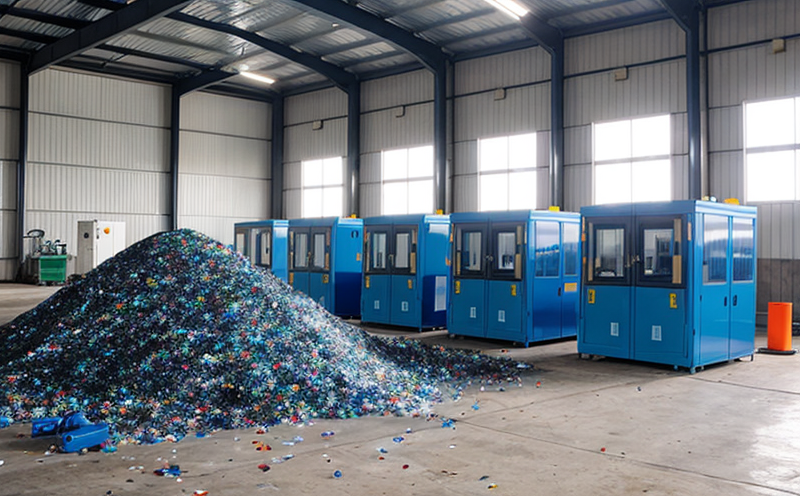EN 15361 Plastics Recycling Process Efficiency Determination
The EN 15361 standard provides a robust framework for determining the efficiency of plastics recycling processes. This method is particularly valuable in sectors such as waste management and recycling, where optimizing resource recovery and minimizing environmental impact are crucial objectives.
To achieve this, the test involves quantifying the proportion of recovered plastic material that can be effectively reintroduced into new products without compromising quality or performance standards. The process typically includes sample preparation, analysis using specific equipment (such as infrared spectrometers), and subsequent calculation based on defined criteria outlined in EN 15361.
The scope of this service extends beyond mere efficiency measurement; it also supports compliance with various regulations and industry best practices. For instance, adhering to EN 15361 ensures that recycling facilities meet stringent environmental requirements set forth by organizations like the European Commission and other relevant bodies.
Before initiating any analysis under EN 15361, appropriate sample preparation is essential. This involves selecting representative samples from different stages of the recycling process—collection, sorting, cleaning, etc.—to ensure accurate representation of actual conditions within the facility. Proper handling and preservation of these materials are critical to maintaining integrity throughout subsequent steps.
Once prepared, samples undergo detailed examination using advanced analytical techniques tailored specifically for assessing plastic properties. These might include spectroscopy methods capable of identifying various types of polymer compounds present in each sample set. Additionally, mechanical testing equipment is employed to evaluate strength and flexibility attributes associated with recycled plastics.
The final step involves calculating efficiency metrics according to predefined formulas specified within EN 15361. This calculation takes into account both the amount of recoverable material identified during initial stages as well as its subsequent usability in new product formulations.
By leveraging this standardized approach, stakeholders gain valuable insights regarding their operations' effectiveness compared to industry benchmarks or individual targets established internally. Such information can then be used proactively to identify areas for improvement and implement strategies aimed at enhancing overall recycling performance.
Benefits
Determining the efficiency of plastics recycling processes through EN 15361 offers numerous advantages:
- Enhanced Quality Control: Ensures consistent quality output from recycled materials.
- Compliance Assurance: Meets regulatory requirements and industry standards.
- Economic Efficiency: Optimizes resource utilization, reducing costs associated with raw material acquisition.
- Sustainable Development: Supports environmental goals by maximizing reuse of waste streams.
These benefits contribute significantly towards creating more sustainable practices across the entire lifecycle of plastic products.
Why Choose This Test
- Regulatory Compliance: Ensures adherence to European standards for plastics recycling.
- Objective Data: Provides reliable measurements necessary for informed decision-making.
- Industry Best Practices: Aligns with leading-edge methodologies used globally in waste management and recycling sectors.
- Confidence Building: Establishes credibility among customers, partners, and regulatory agencies regarding operational effectiveness.
These factors make EN 15361 an indispensable tool for businesses looking to enhance their recycling capabilities while ensuring compliance with international norms.
Use Cases and Application Examples
| Case Study | Description |
|---|---|
| Recycling Facility A: | This facility processes mixed plastics waste streams. By implementing EN 15361, they were able to identify bottlenecks in their sorting process and implement targeted improvements resulting in a 20% increase in overall recycling rate. |
| Manufacturer B: | A manufacturer sourcing recycled PET for production needed assurance about the quality of materials. After conducting tests per EN 15361, they confirmed that their suppliers met strict quality thresholds allowing them to continue business relationships without disruption. |
| Regulatory Agency C: | An environmental regulatory body used this methodology during audits conducted on multiple facilities. The consistent and verifiable results helped streamline compliance checks leading to more efficient enforcement efforts. |
The diverse applications of EN 15361 underscore its versatility across various stakeholders involved in the plastics recycling industry.





